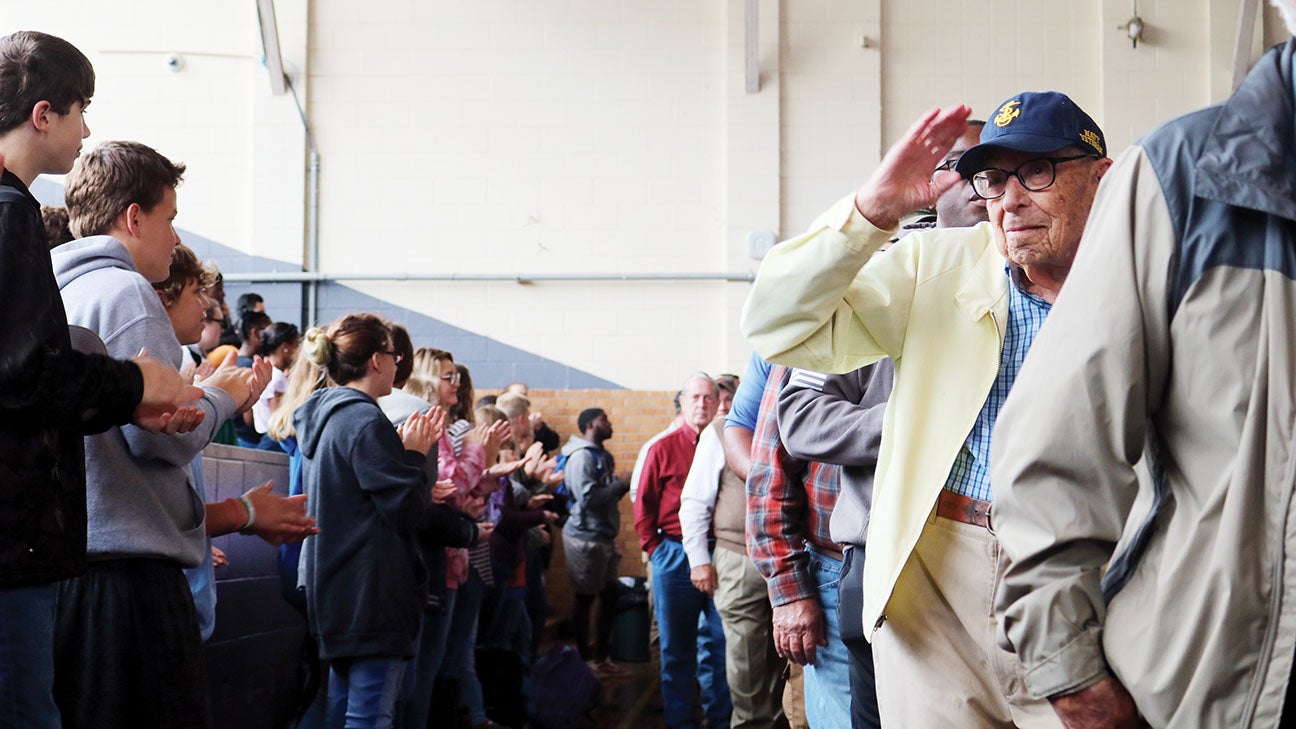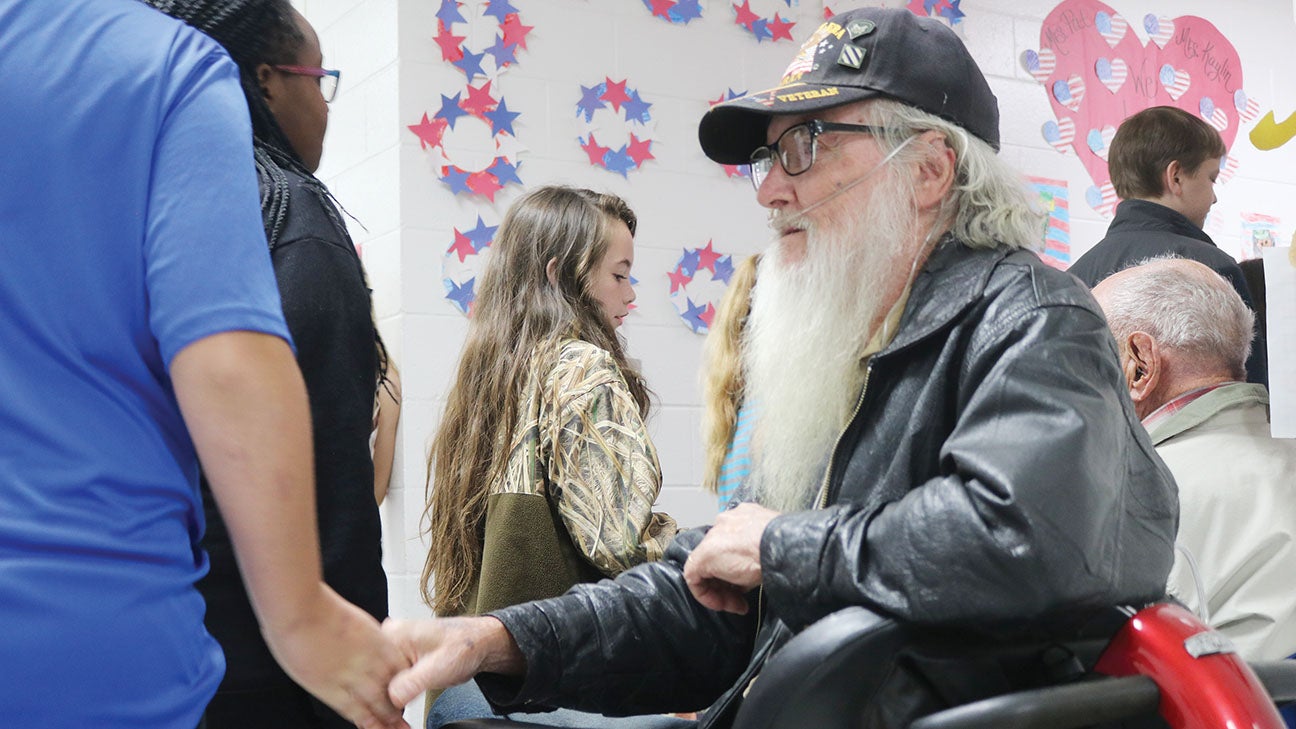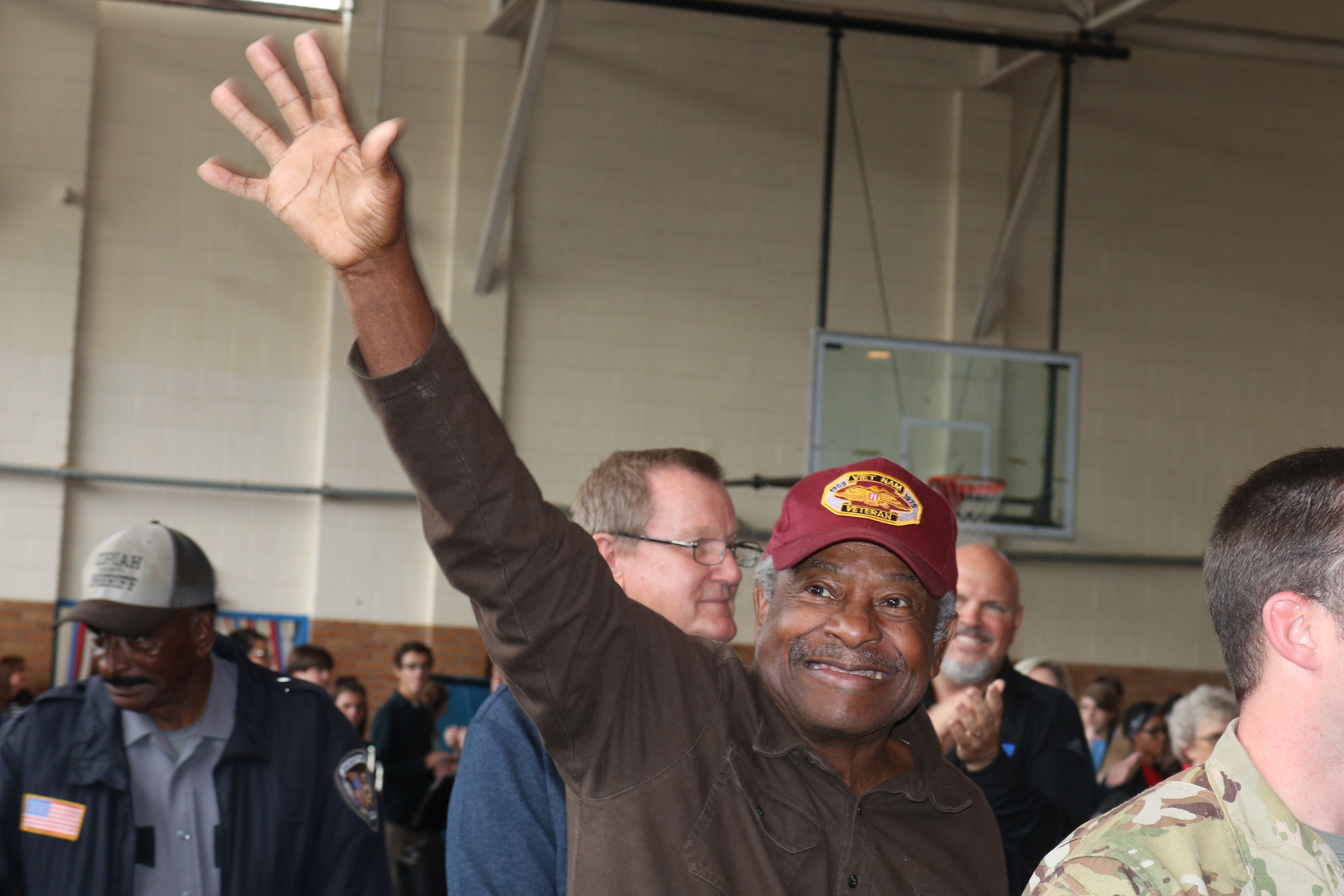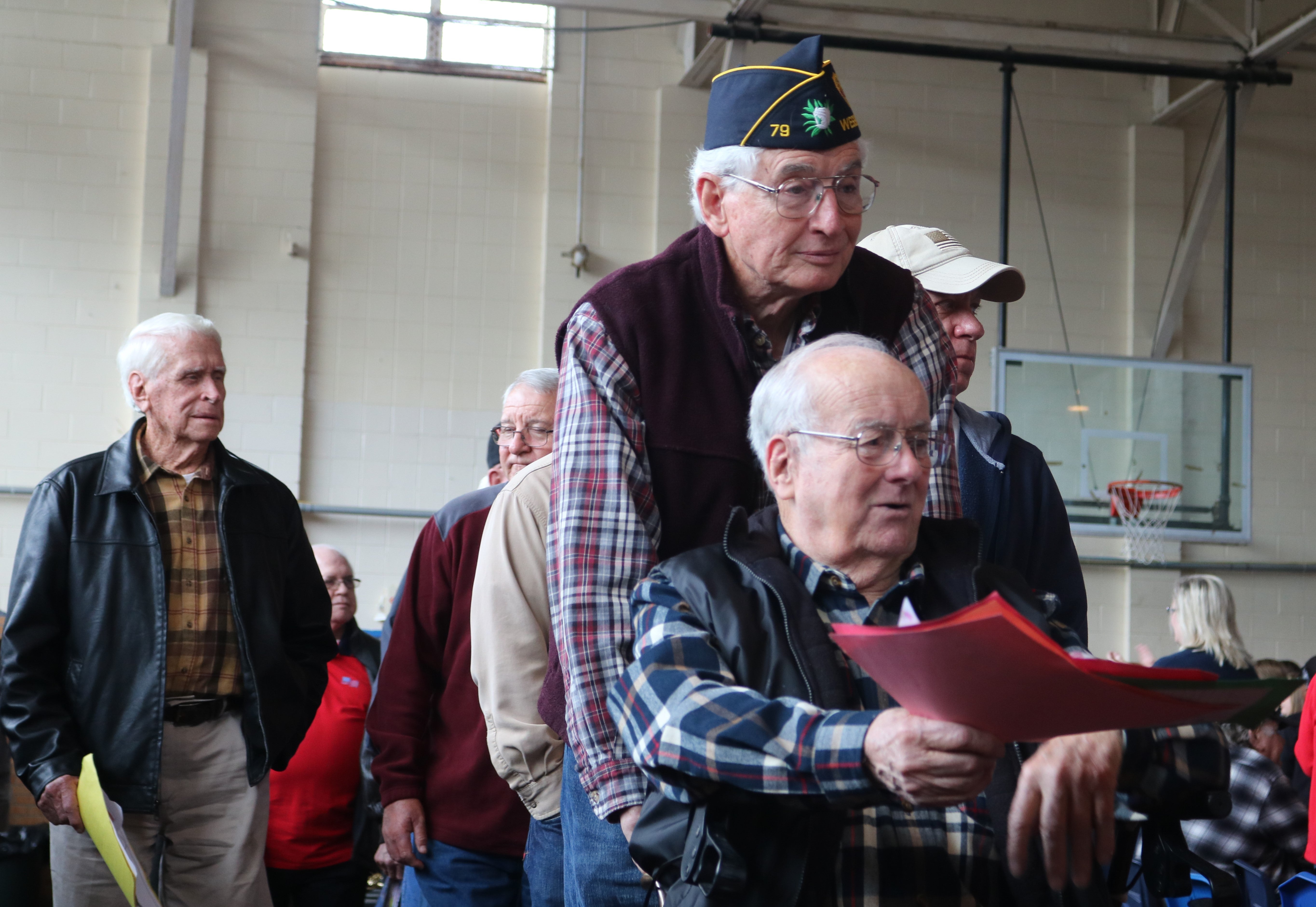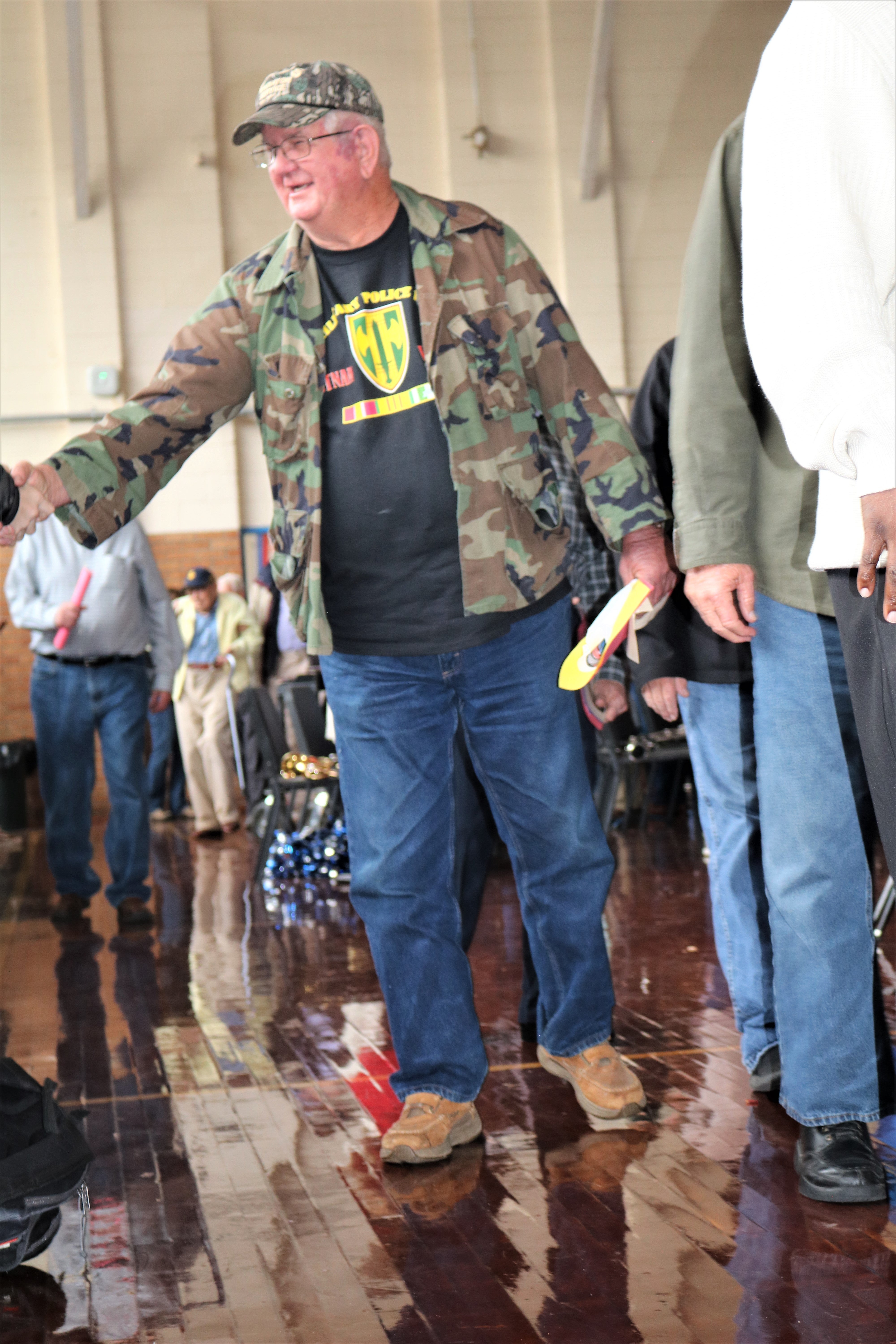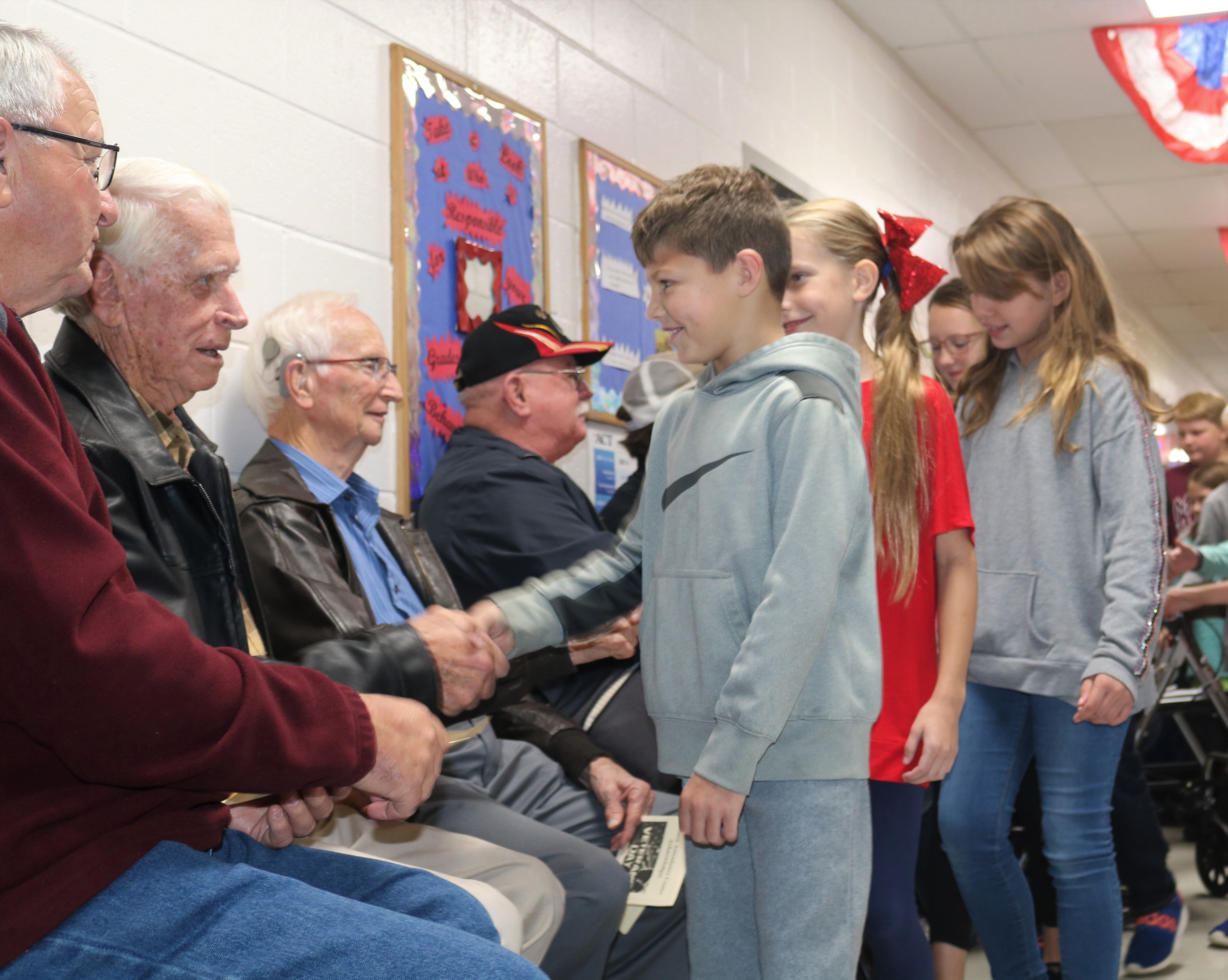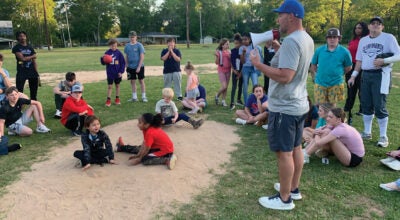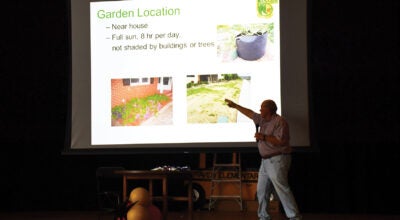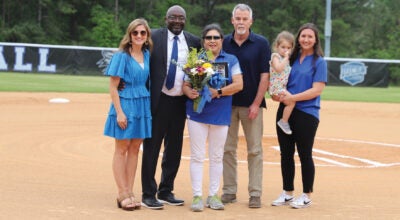Veterans honored at Wesson Attendance Center
Published 10:13 pm Friday, November 8, 2019
Wesson Attendance Center rolled out the red, white, and blue carpet for area veterans Friday, treating them to a heroes’ welcome complete with some 600 handshakes and several standing ovations.
It’s an annual tradition the school has embraced for more years than administrators can remember.
“I know it’s been decades,” Assistant Principal Barbie Roberson confirmed.
The morning program began with a biscuit breakfast for the veterans and concluded with a Cobra concert band arrangement of “America the Beautiful.” Both segments served to bookend other highlights, including the singing of the national anthem by the school’s kindergartners and the recognition of guests by their service branches.
Attendees, ranging in age from 22 to 102, said it’s one of their favorite Veterans Day events. Many pointed to the half-hour “hall parade” — when each elementary student stops to shake hands with veterans lining walkways — as the clincher. Others cited extended applause when they entered the gym, hand-crafted cards from students, and listening to student Suzanna Smith play taps.
Producing the event required strategy, something veterans can appreciate. Faculty member Susan Berch co-sponsors Wesson’s student council, the group responsible for the Veterans Day program. They chose the date last May, then held planning meetings in September, followed by October’s sizable task — addressing 165 invitations.
Council members arrived Friday morning dressed in their mandated Sunday best, ready to greet veterans at the door. Berch said it’s all about instilling honor in a generation that’s wrestling with entitlement issues: “We try to make the children aware that we’re not just given freedom, but that people fight for it each day.”
She believes the effort pays off.
“On the day of the program you can just tell there’s a different atmosphere. We never have to get on to the children for misbehaving. They give so much respect to the veterans, and it’s good to watch them in that environment and to see that they really do know how to show respect,” she said.
Wesson senior Emma Anderson understands the importance of honoring veterans. Her dad and both of her grandfathers served in the military, but she thinks school events like Friday’s make a difference for classmates who lack those kind of relationships.
“You can tell that hearing experiences from the veterans themselves definitely impacts students more than someone just trying to explain it to them,” Anderson said.
In Rod Martin’s eighth grade American history class, understanding the sacrifices of veterans is a priority.
“I try to make things relevant,” said Martin, a Wesson instructor with a 23-year tenure. “When we studied the Continental Army, we talked about today’s soldiers and the conditions they experience versus what it was like in the Revolutionary War. I want them thinking about what it feels like to be in those shoes — to be separated from their families, to miss holidays and birthdays.”
Martin believes that while students are more connected than ever, the type of information they’re accessing doesn’t expose them to what’s going on in the world militarily.
“Unless they are personally affected by it — have family members serving — I have to really stretch to get them to invest in the meaning of what we’re talking about.”
Army veteran Landon Beasley agrees. At 32, he was one of the youngest guests at his alma mater’s event, but his resume reflects an active 14 years of service.
“The biggest takeaway for students here today is the sacrifice that one percent of the population makes in order to provide the freedoms that we have in America,” he said. “They’re definitely not seen throughout the world.”
Beasley should know. He has three deployments, across as many continents, under his belt.
“Even countries that are comparable to us, such as Germany and Austria, don’t have the freedoms that the one percent grants us. And we also go out and provide the hope of freedom for other countries,” he said.
He acknowledged conveying that to students, as well as the rest of the population, is difficult.
“In countries in Africa, villages get overrun by terrorists and 40 people die,” Beasley said. “That’s happening daily, and we’re there to try to help them prevent that. Until you see it or research it, you’re not going to grasp it. We can just hope and try.”
What does a veteran look like?
According to the Pew Research Center, categorizing America’s veteran changing population isn’t easy. Some statistics may surprise you.
• Gulf War-era veterans now account for the largest share of all U.S. veterans. That’s the period of time from August 1990 until the present. They exceeded Vietnam-era veterans in 2016.
• The number of Americans with military experience is declining. In 2016, 7 percent of U.S. adults were veterans, down from 18 percent in 1980, according to the Census Bureau.
• The shape of veterans is changing. Currently, nine-in-ten veterans (91 percent) are men while 9 percent are women. Within 25 years, the share of female veterans is expected to double.
• The number of Congressmen with prior military experience is declining. In 2017, 20 percent of senators and 19 percent of representatives had prior military service. In 1975, 81 percent of the Senate had worn a uniform.


